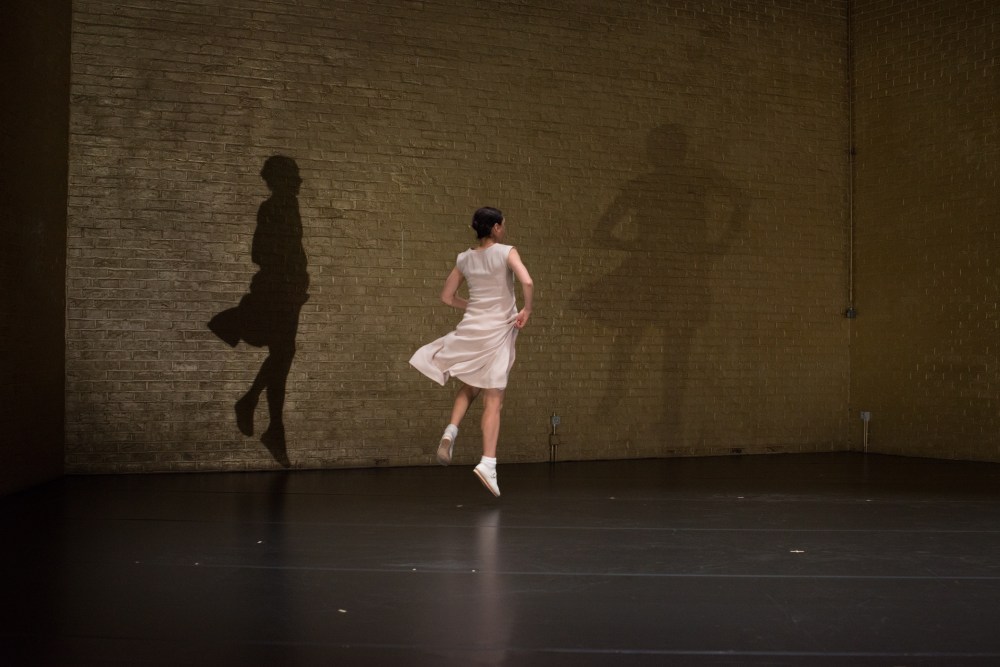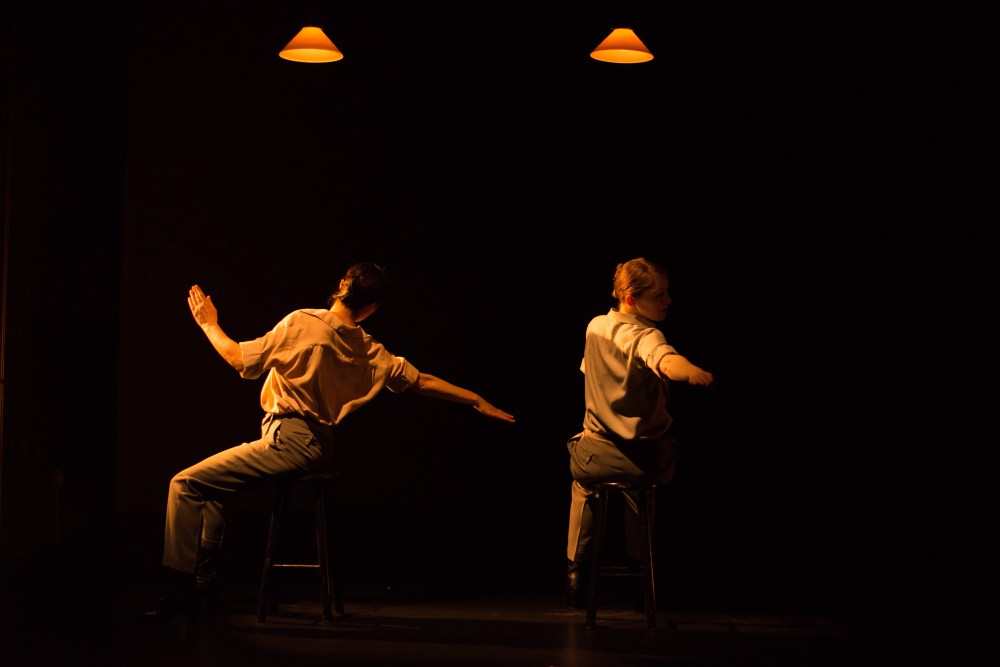Sydney Opera House, January 9.
In 1999 Jack Anderson reviewed Fase, Four Movements to the Music of Steve Reich for The New York Times, reporting that Flemish choreographer Anne Teresa De Keersmaeker had “recently announced her wish to retire it from her repertory”. Fortunately she changed her mind. Fase has not only continued to be seen, but seen with De Keersmaeker in it.
She made the work in the early 1980s, in collaboration with Michèle Anne De Mey and Jennifer Everhard, when she was little more than 20. It premiered in Brussels in March 1982 with De Keersmaeker and De Mey as the performers and almost instantly made De Keersmaeker’s name as an important, influential contemporary dance artist. In its first three years it was much revived and in recent years has been shown frequently: Los Angeles in November of last year, New York in July 2014 and London in July 2012, each time with Tale Dolven, the dancer seen with De Keersmaeker at the Sydney Festival. Dolven was born in 1981, the year Fase was nearing completion; De Keersmaeker is now 55.

Fase is highly formal and abstract, requiring extraordinary levels of precision and stamina. It may at first blush look cool – chilly, even – and austere but its dizzying wealth of detail and the illumination of Steve Reich’s music make Fase an incredibly rich, even voluptuous experience. It’s a demanding work to be sure, giving the audience a substantial workout too. So often watching is a passive business. With Fase, alertness and concentration are required and the rewards are great.
The choreographic material appears to be simple and there is ample time during many, many repetitions and small variations to observe its qualities and relationship with the music. In the first section, Piano Phase, the emphasis is on progression in a straight line while pivoting, walking and raising and lowering the arms, which also loosely wrap around the body. In Come Out, performed seated, the head is touched with the arm at an angle, there are bends from the waist and an arm stretches out strongly. Violin Phase is a solo for De Keersmaeker in which circling is the predominant motif and in the short, snappy Clapping Music the duo repeatedly rises sharply en pointe in sneakers with knees bent.

By themselves these things have no meaning, even though they may spark ideas and responses. They do, crucially, impel close listening to the music and its almost imperceptible changes. At many times the dancers are in unison; at others move in and out of phase with one another. They may stop abruptly then start again. There are tiny gestures set against large ones, and so on. You note how the apparently plain, unassertive dresses worn in the first and third movements have a swirling life of their own (and, in Violin Phase, how the dress allows De Keersmaeker to be very flirty and folky as she lifts its to reveal shiningly white knickers). You also note the small variations in reaction time of the dancers and their different movement quality. In her mid-30s, Dolmen is a strong, juicy presence; De Keersmaeker in her mid-50s is more wiry, more intense.
While there are new things to apprehend in each individual moment, it’s also necessary to pay attention to the overall arc of a piece in which music, movement and design work together in a highly sophisticated way.
In Piano Phase the dancers’ shadows merge and separate, multiplying the performers in ghostly fashion. In Come Out the menacing mood created by overhead lights (lighting by Mark Schwentner) is amplified by the workmanlike shirts and trousers the women wear, so different from the pale, feminine frocks of Piano Phase.

The movement here is no less repetitive or contained than in Piano Phase but somehow more sombre. Reich’s distortion of a man’s voice – it is a repetition of the words “come out” until they are no longer recognisable – is chilling and there is an intimation of forced labour and a desire for contact. The bend from the waist would seem to suggest anguish and the outstretched arm a yearning for touch that is never fulfilled. (Others may well take away a quite different impression.) Clapping Music, with lighting by Remon Fromont, uses the same trousers-and-shirt combo but in this context they take on a sporty air, even as one can see a connection with Come Out via the lighting.
And to think this was only De Keersmaeker’s second work. Astounding. It’s no surprise that Fase has become a modern classic: 34 years after its creation, it feels timeless. There are just three Sydney Festival performances, the last of them tonight (January 11).
De Keersmaeker’s company, Rosas, also performs a relatively new work at the festival, Vortex Temporum, made in 2013, in collaboration with the contemporary music group Ictus. It opens on January 15 at Carriageworks.